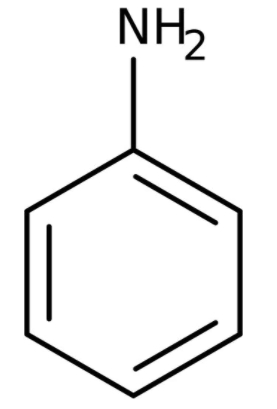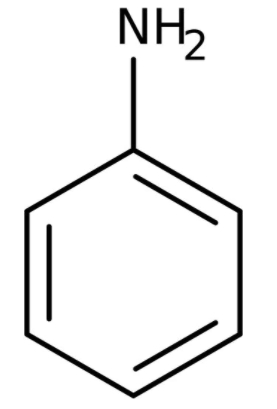Hinsberg's method to separate amines is based on the use of:
(1) benzene sulphonyl chloride
(2) benzene sulphonic acid
(3) ethyl oxalate
(4) acetyl chloride
हिंसबर्ग विधि से ऐमीन को पृथक करना किसके उपयोग पर आधारित है?
(1) बेन्जीन सल्फोनिल क्लोराइड
(2) बेन्जीन सल्फोनिक अम्ल
(3) एथिल ऑक्सैलेट
(4) एसीटिल क्लोराइड
An amine is reacted with benzene sulphonyl chloride then a solid compound is formed which is insoluble in alkali, The amine is
(1)
(2)
(3)
(4)
एक ऐमीन बेंजीन सल्फोनिल क्लोराइड के साथ अभिकृत होती है तब एक ठोस यौगिक का निर्माण होता है जो क्षार में अघुलनशील होता है, ऐमीन है:
(1)
(2)
(3)
(4)
The IUPAC name of the compound having formula,
is :
1. 3-aminohydroxy propionic acid
2. 2-amino-propan-3-oic acid
3. amino hydroxy propionic acid
4. 2-amino-3-hydroxy propionic acid

1. 3-एमीनोहाइड्रॉक्सी प्रोपिओनिक अम्ल
2. 2-एमीनो-प्रोपेन-3-ओइक अम्ल
3. एमीनो हाइड्रॉक्सी प्रोपिओनिक अम्ल
4. 2-एमीनो-3-हाइड्रॉक्सी प्रोपिओनिक अम्ल
Primary nitroalkanes on hydrolysis give:
1. RCOOH + NH2OH
2. RCOOH
3. NH2OH
4. RCOR
प्राथमिक नाइट्रोएल्केन जलअपघटन पर देते हैं:
1.
2. RCOOH
3. NH2OH
4. RCOR
When
1. nitrogen
2. carbon dioxide
3. biuret
4. amminium carbonate
जब
1. नाइट्रोजन
2. कार्बन डाइऑक्साइड
3. बाइयूरेट
4. अमोनियम कार्बोनेट
The following reaction,
is known by the name:
1. Friedel-Crafts reaction
2. Perkins reaction
3. Acetylation reaction
4. Schotten-Baumann reaction
निम्नलिखित अभिक्रिया, 
को किस नाम से जाना जाता है:
(1) फ्रीडेल-क्रॉफ्ट अभिक्रिया
(2) पर्किन अभिक्रिया
(3) ऐसिटलीकरण अभिक्रिया
(4) शॉटन-बोमान अभिक्रिया
The product D in the following sequence of reactoins is,
:
1. ester
2. amine
3. acid
4. alcohol
अभिक्रियाओं के निम्नलिखित अनुक्रम में उत्पाद D है,
:
1. एस्टर
2. ऐमीन
3. अम्ल
4. एल्कोहॉल
X and Y in the given reaction are:
1.
2.
3.
4.
दी गई अभिक्रिया में X और Y हैं:
1.
2.
3.
4.
In the chemical reactions,

the compounds 'A' and 'B' respectively are:
1. nitrobenzene and chlorobenzene
2. nitrobenzene and flurobenzene
3. phenol and benzene
4. benzene diazonium chloride and fluorobenzene
रासायनिक अभिक्रियाओं में,

यौगिक 'A' और 'B' क्रमशः हैं:
1. नाइट्रोबेन्जीन और क्लोरोबेन्जीन
2. नाइट्रोबेन्जीन और फ्लोरोबेन्जीन
3. फीनॉल और बेन्जीन
4. बेन्जीन डाइएजोनियम क्लोराइड और फ्लोरोबेन्जीन
The presence of radical in solution can be detected by:
1. Fehling’s solution
2. Benedict’s solution
3. Schiff's reagent
4. Nessler’s reagent
विलयन में मूलक की उपस्थिति को किसके द्वारा पता लगाया जा सकता है?
1. फेलिंग विलयन
2. बेनेडिक्ट विलयन
3. शिफ़ अभिकर्मक
4. नेस्लर अभकर्मक







